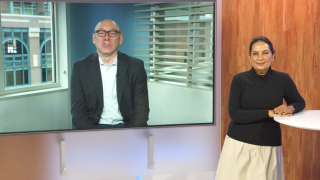You’re Only Live Once
May 10, 2018
The excitement of any major live event, like this year’s college basketball playoffs, aside from being responsible for countless hours of distracted coworkers, is a great time for our industry to witness the improvements to live streaming in action on a massive scale. Digital destinations are providing a better core experience to consumers, with improved framerates and cool new personalization features. When it comes to straight-up video quality and reliability, however, satellite broadcast is a great way to spearhead a big ticket, multi-platform live event, sports or otherwise. By combining both broadcast and digital into a well-planned live event, consumers get the best of both worlds.
“Best Effort” does not an SLA make
IP-based delivery is light-years ahead of where it was just a few years ago, but as more and more consumers develop an appetite for “higher- and higher-quality” video, the widening data stream continues to push the performance limits of every platform. Advertisers and investors understand the value of reaching a gargantuan audience, but they also – rightly – seek assurances that viewers are getting an experience that supports their business objectives. A best-effort IP-based delivery means that there’s no guarantee that the end result will meet any quality metrics, or that the stream will even be successful.
Dan Rayburn, streaming video analyst at Frost & Sullivan, pointed out a common problem with live streaming in a recent interview with Fast Company: there are so many potential failure points, solving for them all is an expensive proposition that most services don’t account for. “When a backup doesn’t kick in, or you don’t have it, or you haven’t planned for it, or you don’t want to spend the money for it, well, your live event’s going to go down,” said Rayburn. Accountability for streaming quality is still a challenge. It’s one thing to talk about how many people tuned in to a streaming event, and another thing entirely to talk about lag, buffering, or streams that were lost entirely.
Broadcast, on the other hand, provides the availability and reliability that consumers have relied upon since the first days of live television. It’s that straightforward, low-latency, consistent quality that digital delivery is benchmarked against. When millions of dollars (or more) are on the line, it can be an exceptionally costly corner to cut.
The satellite-forward, service-first model
The best delivery architecture is one that leverages the strengths of broadcast and digital into a seamless multi-platform workflow – piloted by expert event engineers who plan every transmission and quarterback the communication from start to finish. Look at it this way:
- IP-only: lower cost, complex failsafes required, “best effort” performance
- Broadcast: more expensive, rock-solid best practices, high availability and reliability
- Strategic use of both: trusted, cost-effective performance that supports both linear television and cloud experiences
It’s impossible to overstate the value that an experienced team brings to a top-tier live event; not just in overall quality, but in cost savings as well. A complex live-streaming event, such as a high-profile awards show, is a great example. There are cameras everywhere: the red carpet and interview areas out front, around the audience, the main stage, backstage, etc.
- A well-planned and executed event will map out all redundancy paths, but also will prioritize the use of broadcast signal. For example, the main stage cameras would be captured via broadcast to ensure quality, but ancillary feeds could be digital-only, saving costs.
- Satellite and digital captures are then converged into a master control so that the complete program can be compiled, encoded, and distributed across platforms.
“Simulated” live events open up more possibilities
The hybridized broadcast / digital model is really a best-of-both worlds architecture that not only bakes in the video quality and process redundancy expected of a major live event, it also opens up opportunities to appeal to viewers in new ways. A program can be created that captures the immediacy and advertising allure of a live event, while also incorporating existing video assets into one seamless program. A live studio audience portion, for instance, could be woven into a playlist with sections of non-live material, encoded and then distributed just like a linear television feed. It’s a cost-effective way of producing a special “one night only” event, or a way for a large organization – a coast-to-coast church broadcast, for instance – to maintain a live “feel” with the dependable quality that keeps viewers engaged.
Live programming is going through the roof, with media brands of all stripes working to realize – and monetize – experiences that bring viewers closer to a true “front row experience” than ever before. That said, there are no do-overs in live video; so before the world tunes in, it’s worth the extra planning to ensure that viewers on any platform get the kind of quality that keeps them in their seats.




